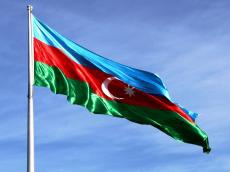|
|
TODAY.AZ / Politics
November 17: Glorious path to freedom
17 November 2016 [11:15] - TODAY.AZ

By Azernews
By Amina Nazarli
November 17 is a momentous date in the history of Azerbaijan, when the nation celebrates the Day of National Revival. That day was a turning point on the way to the revival of national consciousness.
Exactly 28 years ago, the Azerbaijani people took the national liberation movement. After 70 years under the Soviet Union, Azerbaijan had the chance to regain its independence.
Millions of Azerbaijanis headed for the streets on this day, for the first time shouting slogans of freedom and demanding the restoration of their violated rights.
The protests gained momentum to retort Soviet leadership's policy on the Karabakh issue. Following Armenian aggression against Azerbaijan in 1988, when Armenian separatist forces fueled unrest in the Nagorno-Karabakh region of Azerbaijan people stood up.
Profiting by the indifference of the head of the USSR Michael Gorbachev, Armenians expelled 200,000 Azerbaijanis from their lands.
Azerbaijanis stood up to express their endless anger and distrust of the leadership that remained indifferent to the fate of the nation.
This campaign was called the "Movement of the Square", and the largest Square in Baku, where Azerbaijanis conducted sit-in protests after the liberation movement, began to be called "Azadlig" ("Freedom").
The protests lasted for 18 days and nights, becoming the largest protests in the USSR. The Azerbaijani people proved that they could stand up for themselves to defend their rights and land.
The scale of the protests forced Moscow to announce a state of emergency for the first time, mainly in Azerbaijan. The Soviet’s internal security forces used heavy equipment against the protesters, wounding and killing civilians.
Despite the many hardships facing Azerbaijan, the nation took bold steps toward democratization, reorganization, and rebuilding.
During this period, thanks to the hard struggleof the Azerbaijani people, the influential German weekly Spiegel labeled the Azerbaijani people “The nation of the year” for their resistance against Soviet forces.
Taking the advantage of a chaos brought by Gorbachev’s "glasnost" and "democracy" policy, Armenians began claiming to the historical and legal territory of Azerbaijan. They broke out a bloody conflict to annex the Nagorno-Karabakh region of Azerbaijan.
In that time freedom movement named "Popoular Front of Azerbaijan", which was founded in 1988, led a campaign to save the country from disintergation, stood for independence and national sovereignty.
In January of 1990, thousands of people marched on Azadlig Square to struggle for the ideals of freedom, independence and sovereignty, to preserve the nation's territorial integrity.
However, the Soviet leadership warned, that it would not tolerate Azerbaijan’s breaking away from the Soviet Union.
During a military operation that began on the night of January 19th and continued until January 20th, 26,000 hostile and aggressive Soviet special forces, called "Alfa", entered Baku and committed atrocities against the Azerbaijani people. They stormed into crowds and murdered hundreds of civilians, without declaring a state of emergency.
They also began to open fire on protesters, crushing many of them with tanks, and arrested hundreds more for imprisonment and torture. The invasion was launched at midnight. It was committed with brutality. Even children, women and the elderly were targeted.
Though the final death toll is still disputed to this day, at least 130 people died of wounds received during the subsequent violent confrontations. A vast majority of the casualties were civilians, with over 700 of them having been wounded.
On October 18, 1991, after the adoption of the Constitutional Act, Azerbaijan gained its long-awaited independence, having surmounted many challenges.
This was a glorious day in the history of the country. Finally, Azerbaijan had regained its sovereignty and put an end to its dependence on the Soviet empire.
URL: http://www.today.az/news/politics/156089.html
 Print version
Print version
Connect with us. Get latest news and updates.
See Also
- 15 September 2025 [15:51]
Citizens of Azerbaijan are at center of all our political steps: President - 15 September 2025 [15:21]
Azerbaijan confers "Dostluq" order upon director general of ICESCO - 15 September 2025 [15:11]
Documents detailing mass attacks on Azerbaijani residents in Khankendi presented in trial of Armenian citizens - 15 September 2025 [14:39]
Dutch probation officials visit Azerbaijan to strengthen cooperation in justice reforms - 15 September 2025 [13:33]
President Ilham Aliyev receives ICESCO Director General - 15 September 2025 [12:43]
Azerbaijan marks 107th anniversary of the liberation of Baku - 15 September 2025 [12:21]
Baku, Astana strengthen ties in law enforcement training - 15 September 2025 [11:50]
President Ilham Aliyev congratulates co-presidents of Republic of Nicaragua - 15 September 2025 [11:30]
President Ilham Aliyev meets residents of Badara, Dashbulag, Seyidbeyli, and Shushakand villages of Khojaly - 15 September 2025 [11:03]
President Ilham Aliyev visits Badara village in Khojaly district
Most Popular
 Next meeting of Azerbaijan’s Economic Council held under Prime Minister’s leadership
Next meeting of Azerbaijan’s Economic Council held under Prime Minister’s leadership
 Qatar to host emergency Arab-Islamic Summit after Israeli strike on Doha
Qatar to host emergency Arab-Islamic Summit after Israeli strike on Doha
 Azerbaijan and Iran to host reciprocal cultural days
Azerbaijan and Iran to host reciprocal cultural days
 Chinese delegation explores cooperation on Trans-Caspian International Transport Route
Chinese delegation explores cooperation on Trans-Caspian International Transport Route
 ADY expands train services on Absheron Circular Route
ADY expands train services on Absheron Circular Route
 SOCAR Türkiye and TANAP hold board meetings in Istanbul
SOCAR Türkiye and TANAP hold board meetings in Istanbul
 Azerbaijan’s Defense Minister Zakir Hasanov condoles Pakistan over deadly terror attack
Azerbaijan’s Defense Minister Zakir Hasanov condoles Pakistan over deadly terror attack
